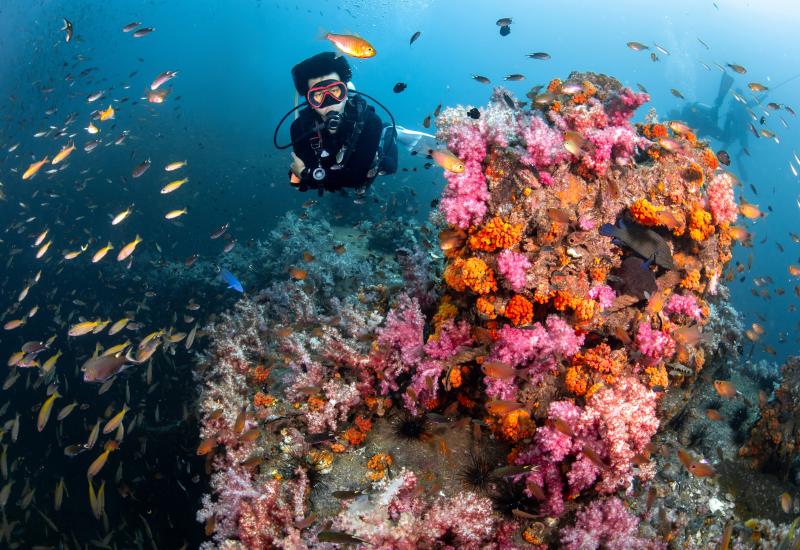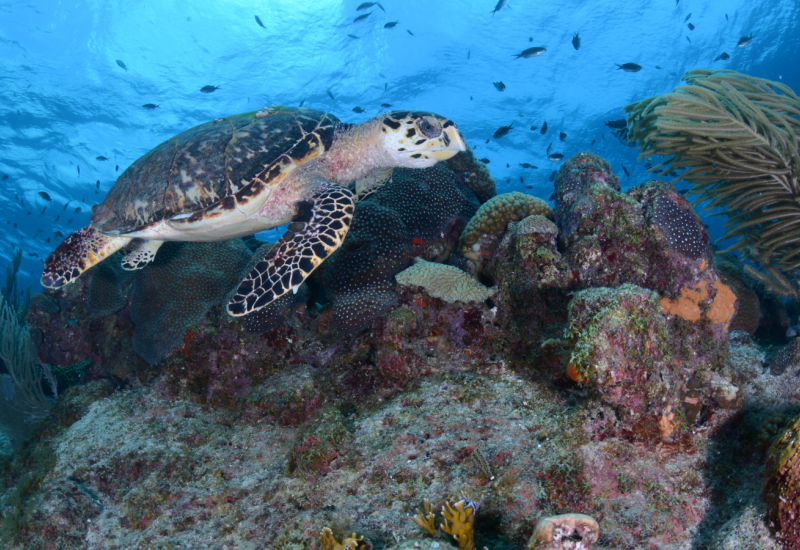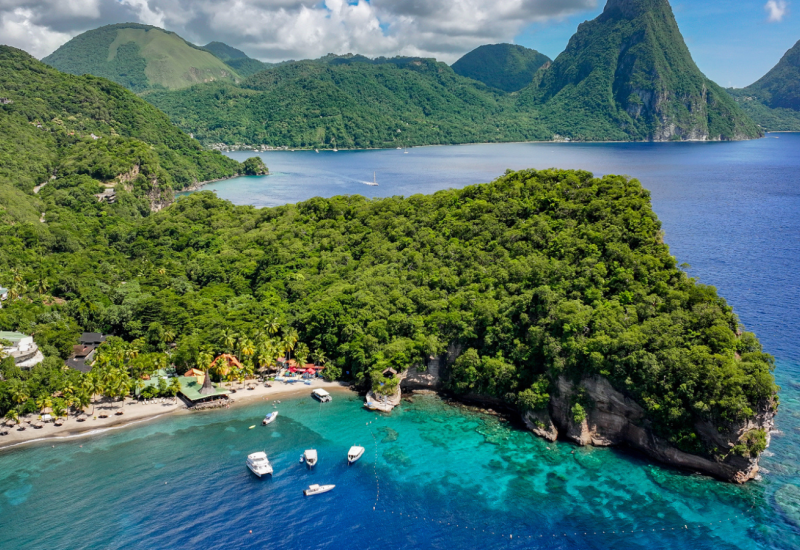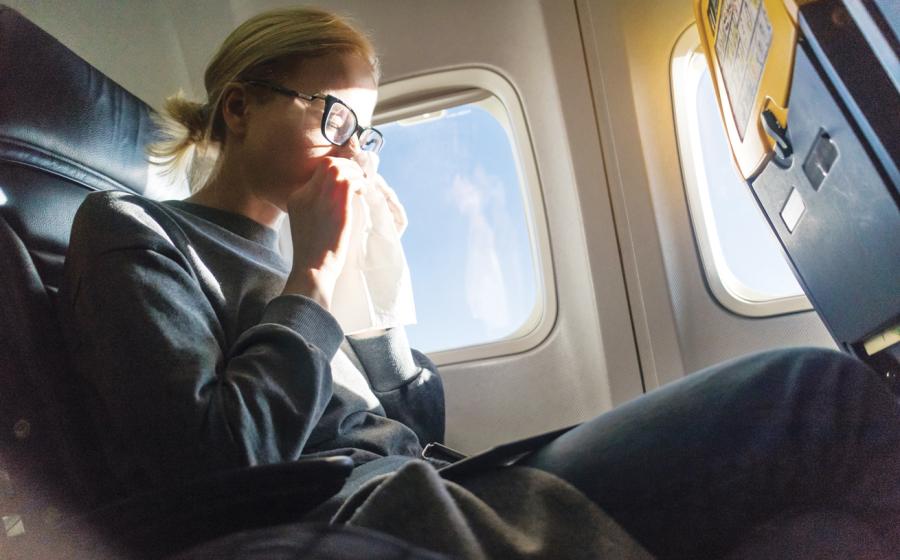Dive Hotspots: Grenada, Solomon Islands and Channel Islands
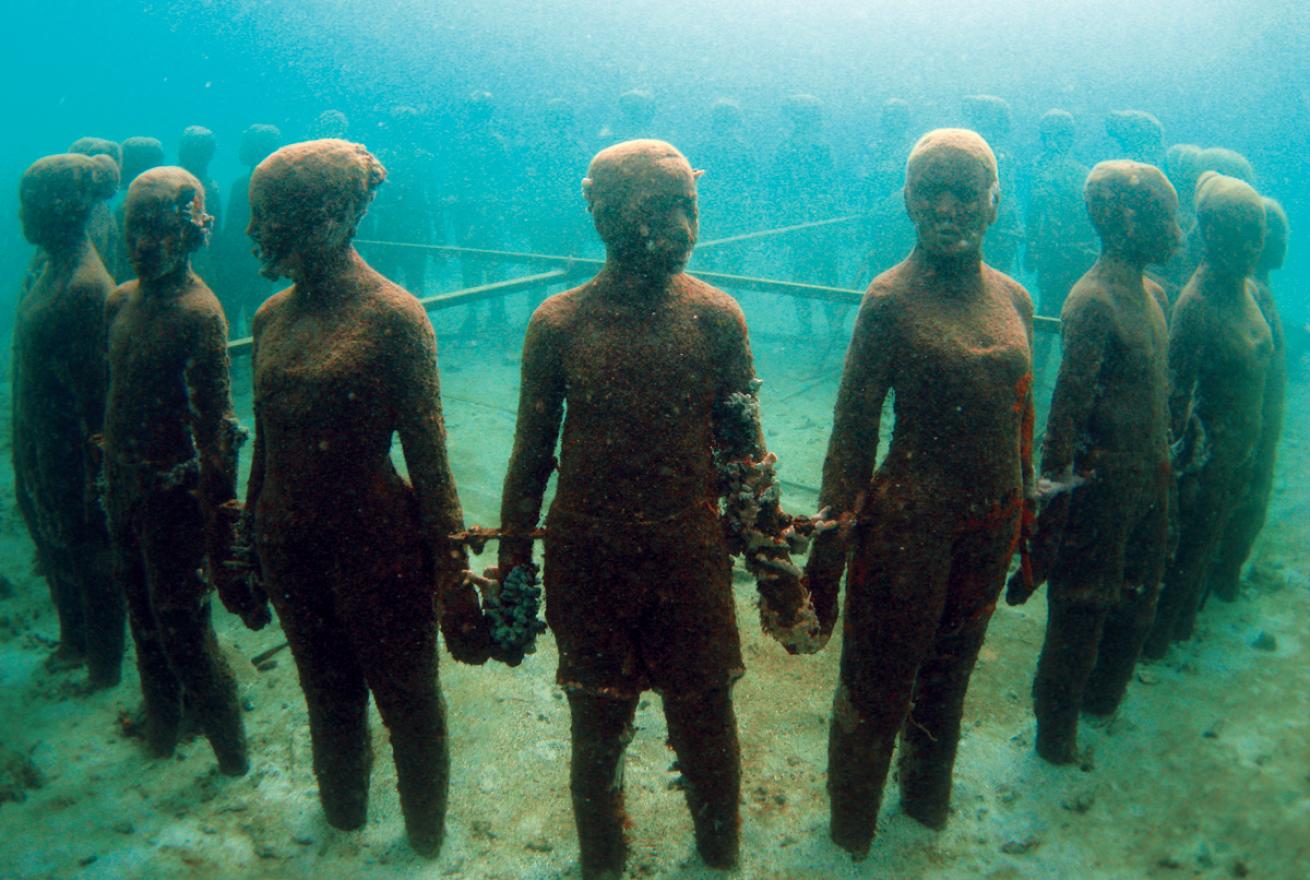
SHUTTERSTOCK/R GOMBARIKUnderwater sculptures transform into artificial reefs in Grenada.
Planning a trip to one of these dive hotspots? Here’s what you need to know. Featuring insight from locals, tips for timing seasonal experiences and the scoop on popular dive sites, as well as some lesser-known dives you’ll want on your radar too.
Grenada
Under the Radar
One of the largest wrecks you can dive in the Caribbean, the 600-foot Bianca C, aka the “Titanic of the Caribbean,” steals the spotlight. But don’t sleep on the Veronica L, a 130-foot-long freighter that sits upright in St. George’s Harbor in just 52 feet of water, absolutely swamped with coral and fish. “Veronica L is a gorgeous wreck that exemplifies how a wreck can become an artificial reef,” says Tom Geer of Aquanauts Grenada, which dives both attractions regularly.
The Classic Dive
Off the coast of Molinere Point, art installations by Jason deCaires Taylor fill the Molinere Underwater Sculpture Park. Created in 2006 in the wake of Hurricane Ivan’s destructive path over Grenada’s reefs, it’s one of the first of its kind in the world. The park and its gallery of sculptures have helped to improve the health of the surrounding reef, and it inspired other projects around the world too. It can be enjoyed by snorkelers as well as divers. An additional 31 statues commissioned by the same artist, called “Coral Carnival,” were installed at the park in November 2023.
Dive Report
Geer says the diving has been fishy and fabulous, and refers to the Moliniere-Beausejour Marine Protected Area as Grenada’s “Manhattan of Reefs.”
“Everyone lives on it. It’s really a must-see,” he says. “The one comment I always hear when people begin diving here is how beautiful and full of life our reefs are.”
Plan a Trip
Over the course of 10 eventful days in the fall, the Dive and Conservation Festival will showcase Grenada’s conservation initiatives. Divers are given access to learning opportunities, both in and out of the water, including tours into the rainforest to see the island’s rare birds, leatherback sea turtle hatching programs, reef-cleaning dives and adaptive diving adventures.
Second-Time Visitor
“Grenada is not a ‘one-anddone’ destination,” says Geer, who recommends visiting the even more mellow island of Carriacou, just north of Grenada. It’s home to more fabulous coral reefs and dive sites to explore, all within a marine reserve.
Related Reading: The World’s First Underwater Sculpture Park Gets an Upgrade
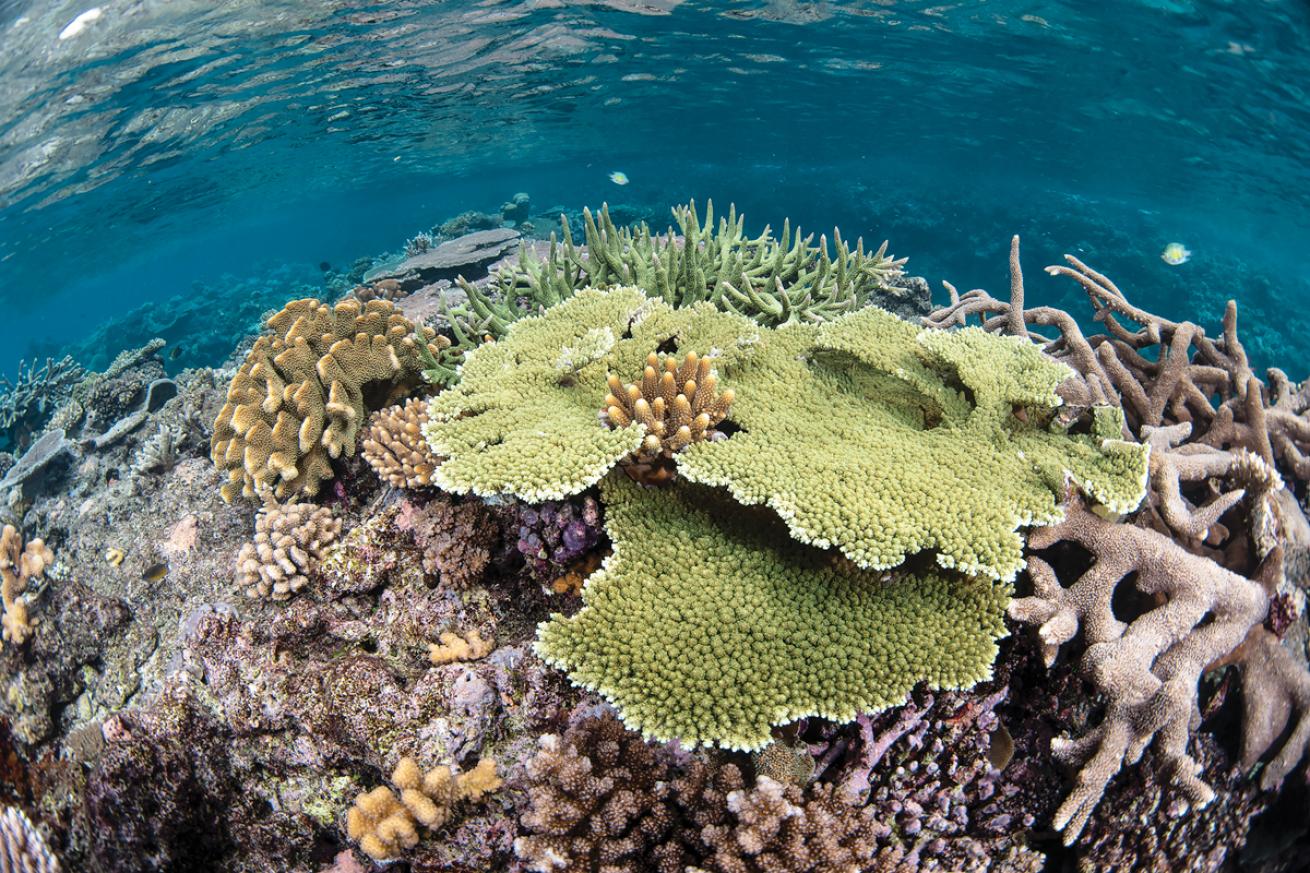
TANYA BURNETTA hard coral garden just under the surface in the Solomon Islands.
Solomon Islands
Under the Radar
Kerrie Kennedy, of Dive Gizo, says that at the tide shift, pelagic fish arrive to feed on shoals of baitfish congregating at the offshore pinnacle called Hot Spot. “Following the earthquake and tsunami in 2007, we lost many of our hard and soft corals on this site,” she says. “But the fish remained and always make for an action-packed dive. Over the past 15 years, the soft corals have flourished, and new hard corals have rebounded.”
The Classic Dive
You can ogle more than 200 species of fish on a single tank at an incredible reef dive site on the northwest tip of Gizo Island called Grand Central Station, says Fiona Teama of Tourism Solomons. The top of the reef starts around the 15-foot mark and drops to roughly 90 feet, covered at every turn with schooling fusiliers in neon hues, pyramid butterflyfish and larger jacks that draw in the reef sharks.
Dive Report
Joan Clua Novellón, new on the team at Dive Gizo, has worked in eight countries and had this to say about diving in the Solomons: “I have never seen such a healthy and diverse range of corals and fish in my life. It’s beyond belief, and it gives me great pleasure to know that some parts of the planet are still healthy and resilient.”
Plan a Trip
Fish spawning peaks in the waters around Njari Island from February to June, with April being the most prolific month, says Danny Kennedy, of Dive Gizo. “This site is the place to see courtship behavior from a multitude of species during all new moon cycles,” he says.
Divers with an interest in military history should plan to visit the Solomon Islands in August during the annual commemoration of World War II events, including the Battle of Guadalcanal.
Second-Time Visitor
Teama recommends making time for a village visit to try traditional foods and see how shell money is made. You may be treated to a ritual dance called the suahongi that plays out in three parts with all male performers. Mark your calendar for cultural celebrations like the Roviana Lagoon Festival in July and the Shell Money Festival in August.
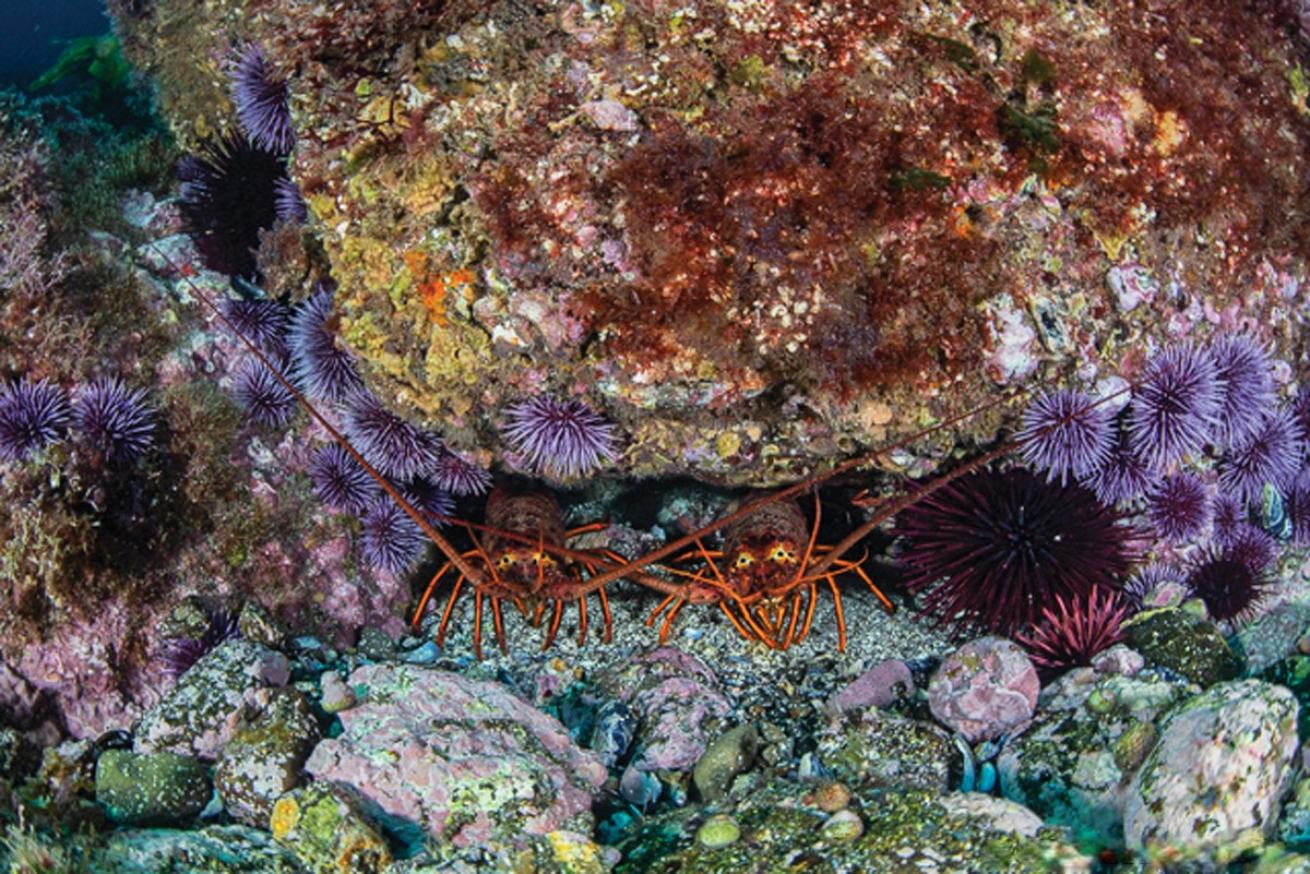
JENNIFER PENNERLobsters lurk in nooks and crannies in the Channel Islands.
Channel Islands, California
Under the Radar
Divers naturally gravitate to Catalina Island, the third largest of the eight Channel Islands. But Elizabeth Beltramo of Eco Dive Center says to put nearby Anacapa Island’s rich ecosystem and diverse wildlife on your radar too. “It’s smaller than Catalina, so there is a bit more water movement around the island, which in turn brings plenty of nutrients,” she says. Boats leave from Ventura and offer two or three dives during day trips to the islands.
The Classic Dive
Beltramo suggests Casino Point on Catalina Island for a beautiful dive spot that’s easy to get to. “Take the ferry from Los Angeles, and in an hour, you are at the island ready to enjoy the many splendors available in the beach town of Avalon,” she says. (It’s known for its cute shops and restaurants). For divers, Casino Point Underwater Park, within a marine protected area, offers easy access to classic Southern California seascapes like kelp forests, rocky outcroppings and sandy ocean floor. (Look for species like grunion, anchovies and garibaldi.)
Dive Report
Megan Hayes, with Eco Dive Center, says she and her students recently saw a sea lion eating a 4-foot-long black sea bass during a dive near Anacapa Island.
“For their first open-water dive, my students came away pretty amazed and stoked for another dive sometime soon,” she said.
Plan a Trip
Tina Kennedy, of Catalina Divers Supply, says January is a great time to dive with squid off Catalina Island, “especially on the backside, where it’s commercially fished.”
When squid are thick in the waters, she adds, they’re nearly everywhere around you. “Dolphins, sea lions and birds all arrive. The squawking is so loud, you can barely hear your buddy on the surface.”
Second-Time Visitor
The Channel Islands’ topside beauty is as superb as the underwater views. When you have time to linger, secure permits to go hiking and camping in the islands’ interiors, where you can sleep like a baby under the wide canopy of the Milky Way.
Related Reading: Guide to Diving in Channel Islands National Marine Sanctuary

